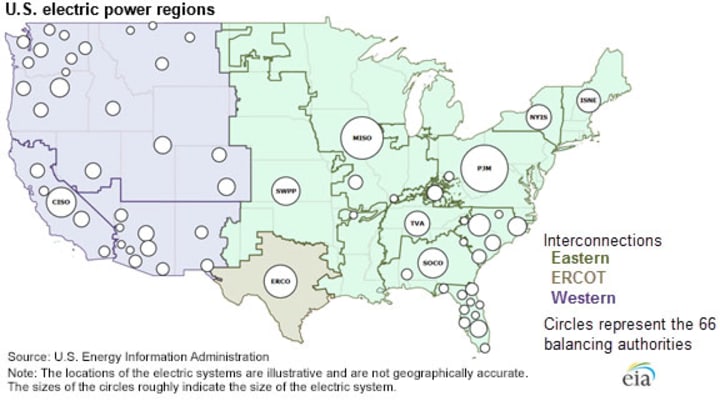5 Ways Conventional Thinking About Going Green is Wrong
Buying green often means not buying at all

Going green is not always intuitive. There are a lot of business that use greenness as a selling point but that doesn't mean we should buy from them. Here are some points to consider:
Cars
Conventional thinking: Buy a Tesla
Actually: Maintain your existing car
Electric cars are almost certainly the way of the future. Energy can just be produced more efficiently and environmentally friendly from a central location than from thousands of little mobile engines. That doesn’t mean you should necessarily immediately ditch your current car for an electric one. The thing is, cars don’t spring fully formed from the ground--it takes energy and resources to build one. If you’re already driving a fuel efficient vehicle it makes sense to keep it running as long as possible.
Laundry:
Conventional thinking: Buy eco friendly detergent
Actually: Wash your clothes in cold water
There are numerous upstarts these days promising to provide greener, earth friendly laundry detergents. The catch is that most of the energy used in the life of laundry detergent comes not from manufacturing but when the consumer actually uses the product-- up to 70%. Most of that energy is spent heating water to wash your clothes. So you can make your laundry more environmentally friendly by washing your clothes in cold water. Except there’s a reason we wash our clothes in hot water: detergent works better at getting out stains in hot water. Unless the detergent is specifically designed to work in cold water--which Tide is.
If you want to take your laundry to the next level then skip the dryer and hang your clothes up to dry. Not only will it save energy but it will prolong the life of the clothes.
Clothes:
Conventional thinking: Buy from sustainable producers
Actually: Buy used clothes
There are a lot of clothing companies presenting themselves as sustainable producers of clothing. But at the end of the day you just can’t really produce anything without using energy and resources. If you want to go real eco, try buying used clothes. These days that doesn’t mean you have to pick through a grungy thrift store. There are upscale second hand stores that sell designer clothes like Uptown Cheapskate, Plato’s Closet, and Clothes Mentor. If you have kids it really makes sense to buy used clothing from someplace like Once Upon a Child since kids frequently outgrow their clothes before they are worn out.
Food:
Conventional thinking: Buy organic
Actually: Only buy what you’re actually going to eat (and less meat)
Among the general public, the term “organic,” when applied to food, has long been accepted as a sort of shorthand for “healthy and environmentally friendly.” Except it’s not necessarily true because farms producing organic food can expect yields of 40% less. This means that a lot more land is needed to produce the same amount of food.
Farming is more complicated than most consumers can appreciate. It’s actually probably more important that a farmer takes measures towards soil preservation, but consumers have no way of knowing that information.
So if you want to eat eco-friendly, what can you do? Well cut out your food waste. Buying food just to throw it away is about as un-eco friendly as you can get. Here are some steps you can take:
-Make a shopping list and stick to it. You’re less likely to buy waste if you have a plan.
-Consider a meal subscription service, which will send you the exact proportions you need to make a meal. I use Dinnerly because of their low price point.
-Don’t patronize buffets, which waste food like crazy.
-Don’t throw out food just because it’s past the “sell by” date. You need to rely on your senses to notice if food is still good or not.
Vegetarians will tell you that if you want to be truly environmentally friendly, you need to quit meat. I’m not advocating that because it’s just not a realistic goal for most people. There’s some dispute over how the measurements are done, but up to 84% of people who try going vegetarian go back to eating meat. That doesn’t mean you can’t do better though. Try going without meat one day a week or adding some substitutes such as Beyond Meat into your diet.
Energy
Conventional thinking: Install solar panels
Actually: Contact your energy provider
Nothing greener than solar right? Pure sunshine into power. The issue with solar power is that it needs to be very sunny year round for the investment to make sense. For most of America that’s not the case. I mean solar power works great if you’re in the desert, but then why are you living in the desert? That’s not a place people should live.
There are other things you can do to improve your energy use. A digital thermometer will regulate the temperature of your home more efficiently. In fact, they are so useful at lowering peak level demands, your energy provider may actually give you one for free.
Energy use is something that needs to improve on a system wide scale more than at a household level. A big problem for the USA is not the generation of electricity but it’s transmission. Better connections are needed for green energy to flow to where it’s needed. The biggest example of a needed connection is uniting America’s western and eastern grids.

There was a plan to do so but it was killed by the Trump administration specifically to protect the coal industry. The Biden administration is pushing towards green energy but it will take years for the capacity to transmit that power to be built up. There’s not a lot individuals can do about it, beyond not voting for politicians who will kill the plan to support the coal industry.
---
For more points on how we can angle for a better world, click here.
About the Creator
Buck Hardcastle
Viscount of Hyrkania and private cartographer to the house of Beifong.






Comments
There are no comments for this story
Be the first to respond and start the conversation.